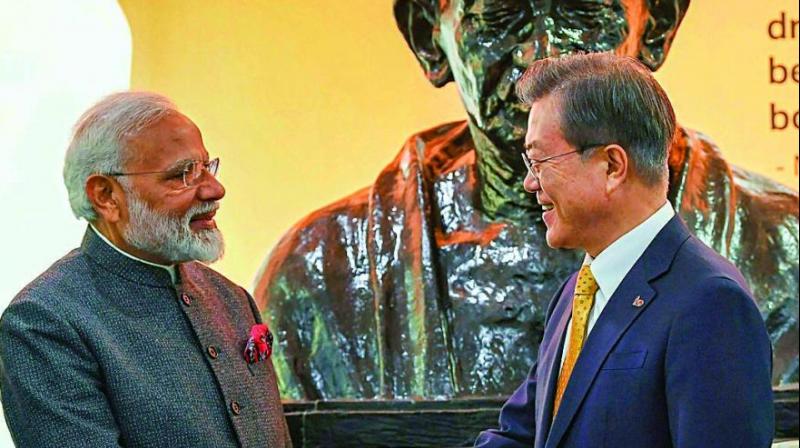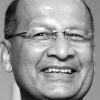The world's eyes turn, once again, to Koreas

Pyongyang has done it yet again. It has successfully stared down the mightiest power in the world. Relenting from their “all or nothing” approach, the Americans have agreed to the second summit with North Korea, otherwise known as the Democratic People’s Republic of Korea (DPRK), in Hanoi on February 27 and 28.
Earlier this month, on February 21 and 22, Prime Minister Narendra Modi paid a state visit to South Korea (otherwise Republic of Korea, or ROK), a dynamic democracy with which we enjoy a “special strategic partnership”. He aptly described ROK as a “truly natural partner”. In the past decade or so, with steadily growing synergies between Asia’s third (India) and fourth largest economies, bilateral ties have flourished in a variety of areas including economic, trade ($21.5 billion in 2018), security and defence, science and technology, IT, cultural as well as people-to-people.
South Korea, geographically a tiny nation with a population of 50 million, is an industrial, innovation and hi-tech powerhouse. It has the distinction of being the first developing country in the world to join the ranks of OECD nations in 1996. It now boasts of a per capita income of $30,000, up from $94 in 1961. ROK is highly export-dependent (39 per cent of GDP in 2017) and views India as a key prospective trade and economic partner. Korean conglomerates called “chaebol”, like KIA Motors and Samsung, invested around $2 billion in India over the last couple of years alone and are keen to qualitatively expand their footprint.
Given its complicated security situation, South Korea has invested heavily in defence, notwithstanding the American security umbrella. It has procured, utilised and improved upon, the best of Western technologies and equipment. L&T is currently co-producing Korean K-9 “Vajra” artillery guns for the Indian Army, after successful field trials. We are in discussions for more defence deals with Seoul, which is open to investing in the newly established Indian defence industrial corridors.
During his visit, the PM inaugurated the “India Korea Startup Centre” which he noted, would serve as a “hub for Korean startups and Indian talent to freely communicate”. A Korea Start-up Centre (KSC) would similarly be established in India to promote collaboration among startups, as also commercialise their ideas, technologies and designs. Tens of thousands of Indian engineers are already working shoulder-to-shoulder with their Korean counterparts in both countries to develop cutting-edge technologies and applications. The sides are actively exploring possibilities to collaborate in harnessing the gains from the Fourth Industrial Revolution.
Prime Minister Modi was also conferred the prestigious “Seoul Peace Prize” for his efforts to promote global peace and harmony, as well as foster inclusive economic growth in India and improve the quality of life. That Mr Modi chose Seoul for probably his last overseas visit before the forthcoming general election is testimony to the mutual desire to infuse a new momentum in bilateral partnership. In President Moon Jae-in, who visited India last July, he has found an ally that is as committed to the relationship.
The South Korean President, since assuming office in May 2017, has also been relentlessly pursuing peace and rapprochement with North Korea. He has been deftly nudging Pyongyang and Washington towards the dialogue table. Both capitals recognise that his mediatory role has been instrumental in facilitating the US-DPRK summits. The decades-long journey to the Singapore (June 12, 2018) and Hanoi summits has been extremely arduous. Insecure, impoverished and isolated, DPRK poses a serious threat to international peace and security, by amassing an arsenal of weapons of mass destruction (WMD), in defiance of UN/US sanctions and breach of its own non-proliferation commitments. In 2017, it tested a thermonuclear device and an intercontinental ballistic missile (ICBM), bringing the continental US within reach for the first time.
In early 2018, its 35-year old dictator Kim Jong-un (KJU) abruptly changed course by offering dialogue and engagement with ROK and the US. Seoul and Washington welcomed the offer. President Trump took everyone by surprise in agreeing to meet KJU unconditionally. The latter also proposed denuclearisation of the Korean Peninsula (KP), if the ROK and US display goodwill, create an atmosphere of peace and stability, and take progressive and synchronous measures, for achieving it.
The proposal embodied both an opportunity and a challenge. Reeling under the impact of crippling economic sanctions and wary of Mr Trump’s sabre-rattling, KJU had decided to sue for peace, signalling a desire to embrace economic growth, seek development assistance and accept restrictions on its WMD programme.
However, the US demanded an upfront commitment of “complete, verifiable and irreversible denuclearisation (CVID)”, which is not acceptable to DPRK. The challenge is compounded by an acute trust deficit between the sides. North Korea is notorious for running circles around its interlocutors and persisting with surreptitious fabrication of WMD. For Pyongyang it is an existential issue. It views its arsenal as an insurance against regime change.
On the other hand, the mercurial Mr Trump, whose presidency is now embroiled in major controversies, is craving for a conspicuous foreign policy success. He is convinced of his abilities to strike a suitable deal with KJU. It is in this background that the first ever DPRK-US summit took place in Singapore, where KJU reiterated his “firm and unwavering commitment to complete denuclearisation of the Korean Peninsula”. While there was no mention of CVID or any timelines, yet Mr Trump promptly announced that “there is no longer a nuclear threat” from Pyongyang.
Expectedly a stalemate followed, with DPRK insisting on a reciprocal step-by-step progress and the US on CVID. Notwithstanding Pyongyang’s lip service, the global strategic community knows it will never completely surrender its nuclear option. Posturing aside, the US appears to have realised that “progressive, reciprocal and limited denuclearisation (PRLD)” is their best bet. Washington may settle for a freeze on the North’s ICBM and thermonuclear programmes, moratorium on further tests, dismantlement of the ICBM engine test and launch site at Tongchang-ri, and the critical Yongbyon nuclear facility, in the presence of international inspectors. In return, the US will normalise ties with DPRK, clear a peace pact, dilute sanctions, allow humanitarian assistance and resumption of economic exchanges.
There are numerous imponderables and tripwires ahead. The Chinese advice to DPRK will have an important bearing on the outcome. The American ability to stay the course will be severely tested, as will KJU’s bona fides. However, there is sufficient room for cautious optimism.

